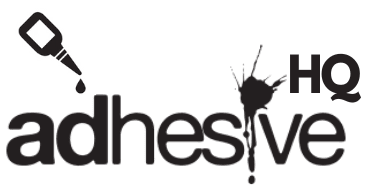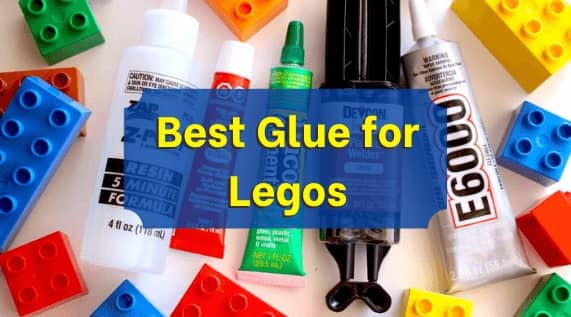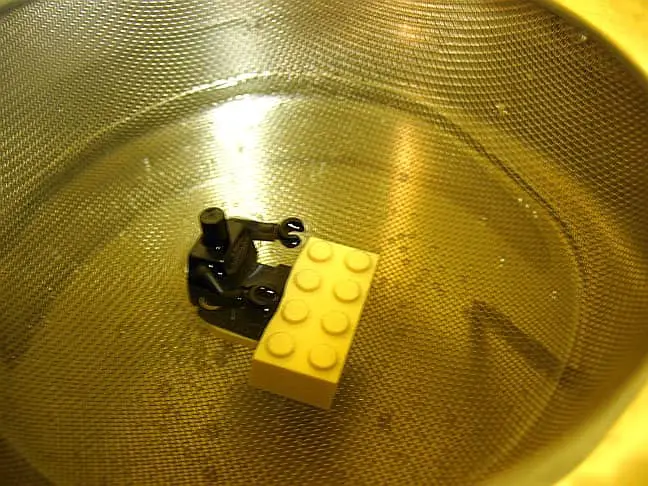3M Spray Adhesive 90 vs 77
3M Spray Adhesive 90 and 3M Spray Adhesive 77 are two types of aerosol spray adhesives produced by the 3M company. Both adhesives are designed to provide quick, strong, and permanent bonds to a wide range of materials. They are commonly used in a variety of industries such as automotive, construction, and woodworking, as well as for DIY projects and crafts.
3M Spray Adhesive 90 is a high-strength adhesive that is suitable for bonding a wide range of materials, including plastic, foam, metal, and more. It has a fast-drying formula and a longer open time, which allows for repositioning of materials before the adhesive sets. This adhesive is also heat and moisture resistant, making it suitable for use in high-temperature environments or in areas with high humidity.
3M Spray Adhesive 77 is a general-purpose adhesive that is ideal for bonding lightweight materials such as paper, cardboard, fabric, and foam. It is a fast-drying adhesive that provides a strong, permanent bond, and it is not recommended for repositioning after application. This adhesive is also not as heat or moisture resistant as 3M Spray Adhesive 90, so it may not be suitable for use in high-temperature environments or in areas with high humidity.
3M Spray Adhesive 90 and 3M Spray Adhesive 77 are both spray adhesives, but they have some differences.
3M Spray Adhesive 90 is a high-strength, fast-drying adhesive that is designed to bond quickly to a variety of surfaces, including plastics and foams. It has a longer open time than 3M Spray Adhesive 77, which means that it can be repositioned for a short period after application. 3M Spray Adhesive 90 is also heat and moisture resistant, making it a good choice for use in high-temperature environments or applications where exposure to water is likely.
On the other hand, 3M Spray Adhesive 77 is a general-purpose adhesive that is ideal for bonding lightweight materials such as paper, cardboard, fabric, and foam. It has a short open time, which means that it sets quickly after application and cannot be repositioned. 3M Spray Adhesive 77 is not as heat or moisture resistant as 3M Spray Adhesive 90, so it may not be the best choice for applications that will be exposed to high temperatures or moisture.
3M Spray Adhesive 90 is a stronger, more versatile adhesive that is better suited for high-stress applications, while 3M Spray Adhesive 77 is a good general-purpose adhesive for bonding lightweight materials quickly and easily.
3M Spray Adhesive 90 Review
Here is a table summarizing the specifications and features of 3M Spray Adhesive 90:
| Specification/Feature | Details |
|---|---|
| Type of Adhesive | Solvent-based aerosol spray adhesive |
| Bond Strength | High strength |
| Open Time | Longer than 3M Spray Adhesive 77 |
| Application Temperature | 60°F to 100°F (16°C to 38°C) |
| Dry Time | 1-10 minutes depending on the material and application amount |
| Color | Clear |
| Size Options | 17.6 oz. can, 24 fl. oz. can |
| Materials Bonded | Plastic, foam, metal, fabric, cardboard, insulation, and more |
| Heat Resistance | Yes, suitable for high-temperature environments |
| Moisture Resistance | Yes, suitable for areas with high humidity |
| Special Features | Fast-drying formula, versatile, suitable for a wide range of applications |
It’s important to note that this is not an exhaustive list of specifications and features, and that the suitability of the adhesive for a particular application may depend on a variety of factors beyond those listed here.
3M Spray Adhesive 90 is a high-strength, fast-drying aerosol adhesive that is suitable for a wide range of applications. It is a solvent-based adhesive that provides a strong and permanent bond, making it an ideal choice for projects that require durability and strength.
One of the main features of 3M Spray Adhesive 90 is its versatility. It is suitable for bonding a variety of materials, including plastics, foams, metals, and more. It is commonly used in the automotive industry for headliner and fabric attachment, as well as for bonding insulation and sound deadening materials. It is also used in the construction industry for bonding insulation, vapor barriers, and other building materials.
The fast-drying formula of 3M Spray Adhesive 90 makes it a popular choice in woodworking and cabinetry. It can be used to attach veneers, laminates, and other materials to wood, as well as for bonding foam to upholstery materials.
Another benefit of 3M Spray Adhesive 90 is its heat and moisture resistance. This adhesive can withstand high temperatures and exposure to water or moisture, making it suitable for use in areas that are subjected to these conditions. This resistance to heat and moisture makes it a popular choice for use in the marine and aerospace industries, where materials are often exposed to extreme temperatures and humidity.
One potential downside to 3M Spray Adhesive 90 is its high strength. While this is an advantage in many applications, it can also make it difficult to reposition materials once they have been bonded. This means that careful planning and preparation is required before applying the adhesive.
In summary, 3M Spray Adhesive 90 is a versatile adhesive that provides a strong and permanent bond. It is suitable for use in a wide range of applications, including automotive, construction, woodworking, and marine and aerospace industries. Its fast-drying formula and heat and moisture resistance make it a popular choice for professionals and DIYers alike.
3M Spray Adhesive 77 Review
3M Super 77 Multipurpose Adhesive, which is a popular choice for bonding lightweight materials such as paper, cardboard, fabric, and foam.
3M Super 77 Multipurpose Adhesive is a versatile, fast-drying adhesive that provides a strong, permanent bond. It is a solvent-based adhesive that is suitable for a wide range of applications, making it a popular choice in a variety of industries, as well as for DIY projects and crafts.
One of the main features of 3M Super 77 Multipurpose Adhesive is its ability to bond lightweight materials quickly and easily. It is commonly used in the automotive industry for headliner and trim attachment, as well as for bonding insulation and sound deadening materials. It is also used in the construction industry for bonding insulation, vapor barriers, and other building materials.
In addition to its versatility, 3M Super 77 Multipurpose Adhesive has a number of other benefits. It dries quickly, allowing for fast and efficient application, and it is not affected by heat or moisture. This makes it suitable for use in a wide range of environments, including areas that are subjected to high temperatures or humidity.
One potential downside of 3M Super 77 Multipurpose Adhesive is that it is not suitable for bonding heavy materials. It is designed for lightweight materials only, and attempts to bond heavier materials may result in an inadequate bond.
In summary, 3M Super 77 Multipurpose Adhesive is a versatile and fast-drying adhesive that provides a strong, permanent bond for lightweight materials. It is suitable for use in a wide range of applications, including automotive, construction, and crafts. Its quick drying time and resistance to heat and moisture make it a popular choice for professionals
| Specification/Feature | Details |
|---|---|
| Type of Adhesive | Solvent-based aerosol spray adhesive |
| Bond Strength | Strong, permanent bond |
| Open Time | Short (15 seconds to 10 minutes depending on the material and application amount) |
| Application Temperature | 60°F to 100°F (16°C to 38°C) |
| Dry Time | 15 seconds to 1 hour depending on the material and application amount |
| Color | Clear |
| Size Options | 13.57 oz. can, 16.75 oz. can, 24 oz. can |
| Materials Bonded | Paper, cardboard, fabric, foam, insulation, and more |
| Heat Resistance | Yes, suitable for high-temperature environments |
| Moisture Resistance | Yes, suitable for areas with high humidity |
| Special Features | Fast-drying formula, versatile, suitable for a wide range of lightweight materials |
Buing Guide to Choose 3M Spray Adhesive 77 vs 90
When choosing between 3M Adhesive Spray 77 and 90, there are a number of factors to consider. Here’s a detailed buying guide to help you make an informed decision:
- Bond strength: Both 3M Adhesive Spray 77 and 90 provide a high-strength bond, but 90 is generally considered to be the stronger of the two. If you need a very strong bond, 90 may be the better choice.
- Open time: The open time of an adhesive is the amount of time it remains workable after it has been applied. 90 has a longer open time than 77, which means you have more time to adjust the position of the materials you are bonding before the adhesive sets. If you need more time to work with the materials, 90 may be the better choice.
- Materials bonded: Both 77 and 90 are versatile adhesives that can bond a wide range of materials, but they have different strengths in this regard. 77 is generally considered better for lightweight materials such as paper, cardboard, fabric, and foam, while 90 is better for heavier materials such as plastic, metal, and wood. Consider the specific materials you will be bonding and choose the adhesive that is best suited for those materials.
- Application temperature: Both 77 and 90 have a recommended application temperature range of 60°F to 100°F (16°C to 38°C). However, 90 is generally more heat-resistant than 77, making it a better choice for applications in high-temperature environments.
- Dry time: The dry time of an adhesive is the amount of time it takes for the adhesive to fully cure and provide a permanent bond. Both 77 and 90 have a relatively fast dry time, but the exact dry time will depend on the materials being bonded and the amount of adhesive applied. Consider the specific dry time requirements for your application and choose the adhesive that is best suited to those requirements.
- Special features: Both 77 and 90 have special features that may make them a better choice for certain applications. For example, 77 has a low misting formula that reduces overspray, while 90 is moisture-resistant and suitable for use in high-humidity environments. Consider any special features that may be important for your application and choose the adhesive that best meets those requirements.
In summary, when choosing between 3M Adhesive Spray 77 and 90, consider factors such as bond strength, open time, materials bonded, application temperature, dry time, and special features. By carefully evaluating these factors and selecting the adhesive that best meets your needs, you can ensure a successful and long-lasting bond.
What is the main difference between 3M 77 and 3M 90?
The main difference between 3M 77 and 3M 90 spray adhesives is their bond strength and open time. 3M 90 is generally considered to be the stronger adhesive of the two, providing a high-strength bond for heavier materials such as plastic, metal, and wood. 3M 77 is better suited for lightweight materials such as paper, cardboard, fabric, and foam.
In terms of open time, 3M 90 has a longer open time than 3M 77. This means that you have more time to adjust the position of the materials you are bonding before the adhesive sets. If you need more time to work with the materials, 3M 90 may be the better choice.
Can I use 3M Spray Adhesive 90 on vinyl?
Yes, 3M 90 can be used to bond vinyl materials. 3M 90 is a versatile spray adhesive that can bond a wide range of materials, including plastics, metals, wood, and vinyl. However, it’s always recommended to test the adhesive on a small, inconspicuous area before applying it to the entire surface to ensure that it provides the desired bond strength and does not cause any damage to the materials. Additionally, it’s important to follow the manufacturer’s instructions for application and drying time to ensure the best results.
Which is stronger 3M 77 or 3M 90?
In general, 3M 90 is stronger than 3M 77. While both adhesives provide a high-strength bond, 3M 90 is designed for heavier materials such as metal, wood, and plastic, while 3M 77 is better suited for lightweight materials such as paper, cardboard, fabric, and foam.
Additionally, 3M 90 has a longer open time than 3M 77, which means that you have more time to adjust the position of the materials you are bonding before the adhesive sets. This can be particularly useful for larger projects or those that require more precise alignment.
That being said, the choice between 3M 77 and 3M 90 ultimately depends on the specific application and materials being bonded. It’s always recommended to test the adhesive on a small, inconspicuous area before applying it to the entire surface to ensure that it provides the desired bond strength and does not cause any damage to the materials.
What is 3M Super 77 used for?
3M Super 77 is a multipurpose spray adhesive that is used for bonding a wide variety of materials. Its versatility and high-strength bonding properties make it a popular choice in many industries and applications, including:
- Upholstery: It is used in the automotive, marine, and furniture industries for bonding foam, fabric, and leather.
- Construction: It is used in the construction industry for bonding insulation, panels, and decorative elements.
- Packaging: It is used in the packaging industry for bonding foam inserts, labels, and boxes.
- Crafts: It is used for a variety of crafting projects, such as bonding fabrics, paper, and cardboard.
- DIY home projects: It is used for bonding materials such as wood, metal, and plastic for a variety of home improvement projects.
How long does 3M Super 77 last?
Once applied, 3M Super 77 typically dries in a matter of minutes, with a full cure time of 24 hours. The exact time for the adhesive to dry and cure may depend on a variety of factors such as the temperature, humidity, and the materials being bonded.
In terms of the bond strength, 3M Super 77 is designed to provide a strong, permanent bond for a variety of materials such as plastics, metals, wood, and fabrics. The bond strength can last for many years, provided that the surfaces are clean and properly prepared before application, and that the adhesive is used in accordance with the manufacturer’s instructions.
It’s also worth noting that the shelf life of 3M Super 77 can vary depending on storage conditions, such as temperature and humidity. It’s important to store the adhesive in a cool, dry place to ensure its longevity.
Final Thoughts
3M Spray Adhesive 77 and 90 are both versatile, high-quality adhesives that can be used for a variety of applications.
3M Spray Adhesive 77 is generally better suited for lightweight materials such as paper, cardboard, fabric, and foam. It has a faster drying time, but a shorter open time and lower bond strength compared to 3M Spray Adhesive 90.
3M Spray Adhesive 90 is stronger and more durable than 3M Spray Adhesive 77, making it suitable for heavier materials such as plastic, metal, and wood. It has a longer open time, which allows for more time to adjust the position of materials before the adhesive sets.
When choosing between these two adhesives, it’s important to consider the specific materials being bonded, the required bond strength, and the open and drying time needed for the project. Ultimately, selecting the right adhesive can help ensure a successful, long-lasting bond.


